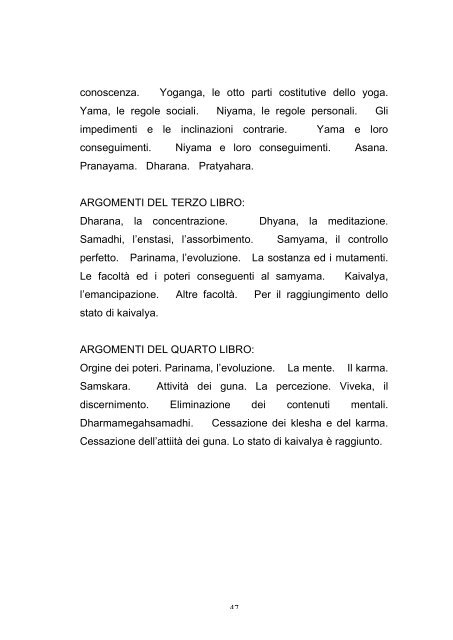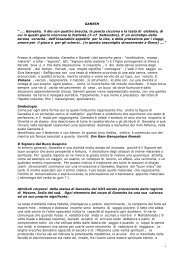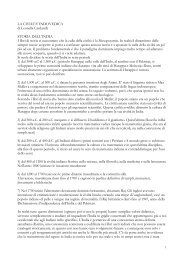Tesi Andrea Serena YOGADARSANA - India con Massimo Taddei
Tesi Andrea Serena YOGADARSANA - India con Massimo Taddei
Tesi Andrea Serena YOGADARSANA - India con Massimo Taddei
You also want an ePaper? Increase the reach of your titles
YUMPU automatically turns print PDFs into web optimized ePapers that Google loves.
<strong>con</strong>oscenza. Yoganga, le otto parti costitutive dello yoga.<br />
Yama, le regole sociali. Niyama, le regole personali. Gli<br />
impedimenti e le inclinazioni <strong>con</strong>trarie. Yama e loro<br />
<strong>con</strong>seguimenti. Niyama e loro <strong>con</strong>seguimenti. Asana.<br />
Pranayama. Dharana. Pratyahara.<br />
ARGOMENTI DEL TERZO LIBRO:<br />
Dharana, la <strong>con</strong>centrazione. Dhyana, la meditazione.<br />
Samadhi, l’enstasi, l’assorbimento. Samyama, il <strong>con</strong>trollo<br />
perfetto. Parinama, l’evoluzione. La sostanza ed i mutamenti.<br />
Le facoltà ed i poteri <strong>con</strong>seguenti al samyama. Kaivalya,<br />
l’emancipazione. Altre facoltà. Per il raggiungimento dello<br />
stato di kaivalya.<br />
ARGOMENTI DEL QUARTO LIBRO:<br />
Orgine dei poteri. Parinama, l’evoluzione. La mente. Il karma.<br />
Samskara. Attività dei guna. La percezione. Viveka, il<br />
discernimento. Eliminazione dei <strong>con</strong>tenuti mentali.<br />
Dharmamegahsamadhi. Cessazione dei klesha e del karma.<br />
Cessazione dell’attiità dei guna. Lo stato di kaivalya è raggiunto.<br />
47







